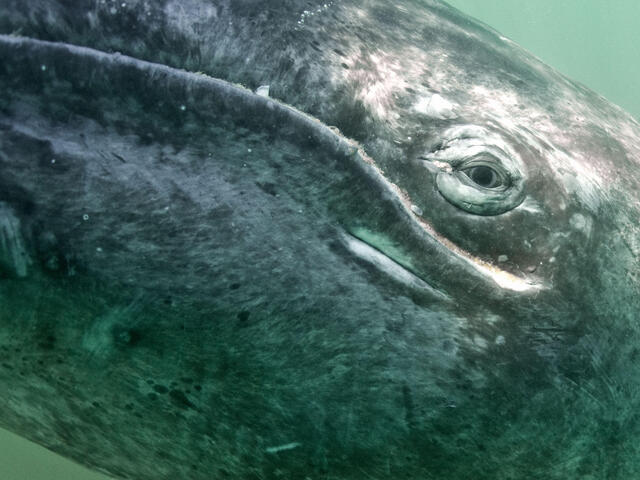Gray Whale

FACTS
- STATUS Least Concern
- POPULATION estimated 150 individuals (western population); stable (eastern population)
- SCIENTIFIC NAME Eschrichtius robustus
- LENGTH between 40 and 50 feet long
- HABITATS Oceans
Gray whales have a hump and a ridge of sharp bumps along their backs, instead of a dorsal fin. They are a type of baleen whale, which means they filter food from the water through special bristly structures in their mouths. Gray whales stay close to shore and feed in shallow water. Their well-known migrations take them between feeding and breeding areas, swimming as much as 12,000 miles round trip.
Critically endangered western gray whales migrate into their summer feeding grounds near Sahkalin Island, Russia in late May or early June and return to their winter feeding grounds in the South China Sea in late autumn. Summer feeding grounds for the eastern population lie in the Bering and Chukchi Seas between Alaska and Russia. In the winter, these eastern gray whales migrate south along the west coast of the US to Mexico to breed and have their calves.
The calm, warm waters of the lagoons are a safe place for young whales, free from predators like killer whales. Locals here affectionately call gray whales "friendly ones" as they have an unusual tendency to approach whale-watching boats and check out the occupants.
- PLACES
